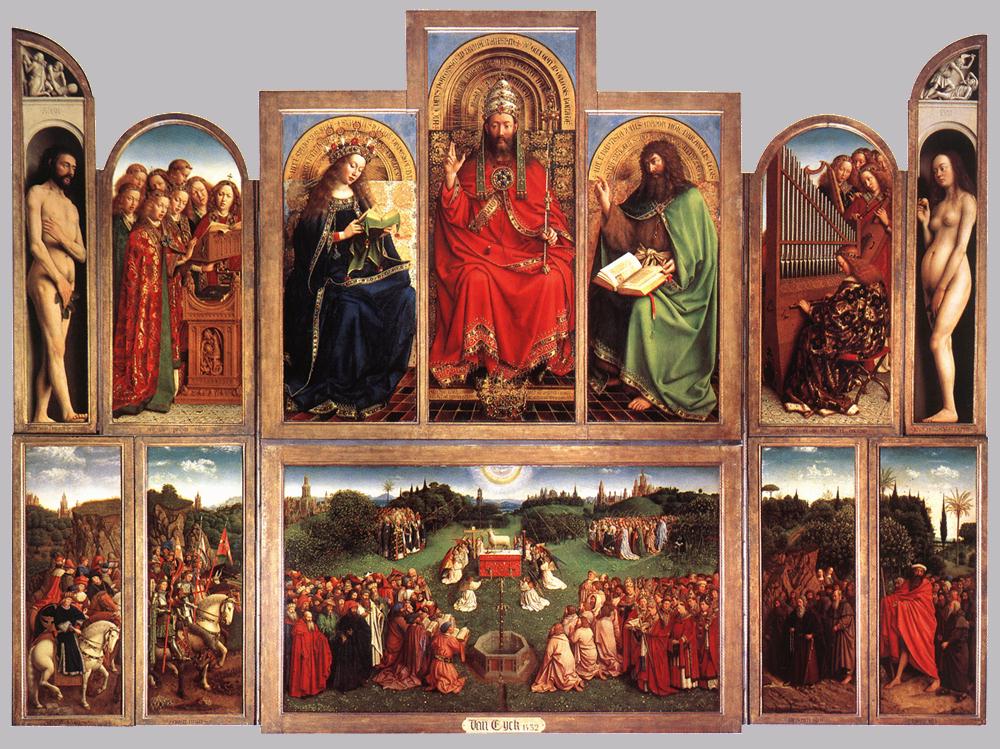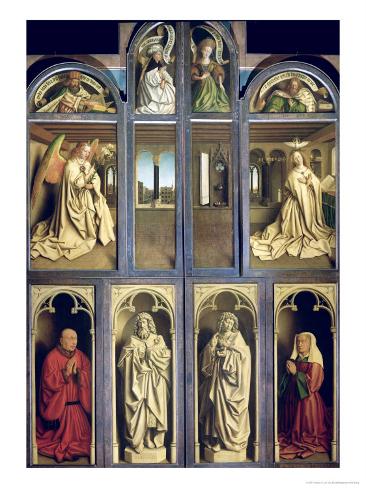 |
| Jan van Eyck, Giovanni Arnolfini and His Wife, 1434. Late Medieval/Early Renaissance. |
Wednesday, September 19, 2012
Chapter 20- Late Medieval and Early Renaissance Northen Europe (post 2)
Chapter 20- Late Medieval and Early Renaissance Northern Europe (post 1)
 |
| Hubert and Jan van Eyck, Ghent Alterpiece (open), 1432. Late Medieval/Early Renaissance. |
 |
| Hubert and Jan van Eyck, Ghent Alterpiece (closed), 1432. Late Medieval/Early Renaissance. |
Chapter 14-Late Medieval Italy
 |
| Giotto di Bondone, Lamentation, ca. 1305. Late Medieval Italy. |
I absolutely love the display of emotion in the Lamentation painting by Giotto di Bondone. It stood out to me because the visages of the figures featured in the painting not only indicate the recognition of human feeling, but I believe that it successfully involves its viewers, technically making them witnesses to the scene.
Sunday, September 9, 2012
Introduction- What is Art History?
Reading through the first chapter of the textbook, I will
honestly say that I did not become genuinely interested in the content until I
saw Georgia O'Keeffe's painting. The
painting’s deep, rich color scheme is, all at once, attention-grabbing and calming.
The shades of blue and green in reminded me of the colors that appear on a “mood
ring” which often indicate that a person is relaxed and tension-free.
 |
| Georgia O'Keeffe's Jack-in-the-Pulpit, 1930. Modern/Contemporary. |
Subscribe to:
Comments (Atom)